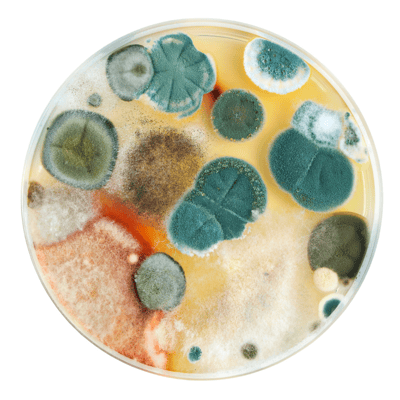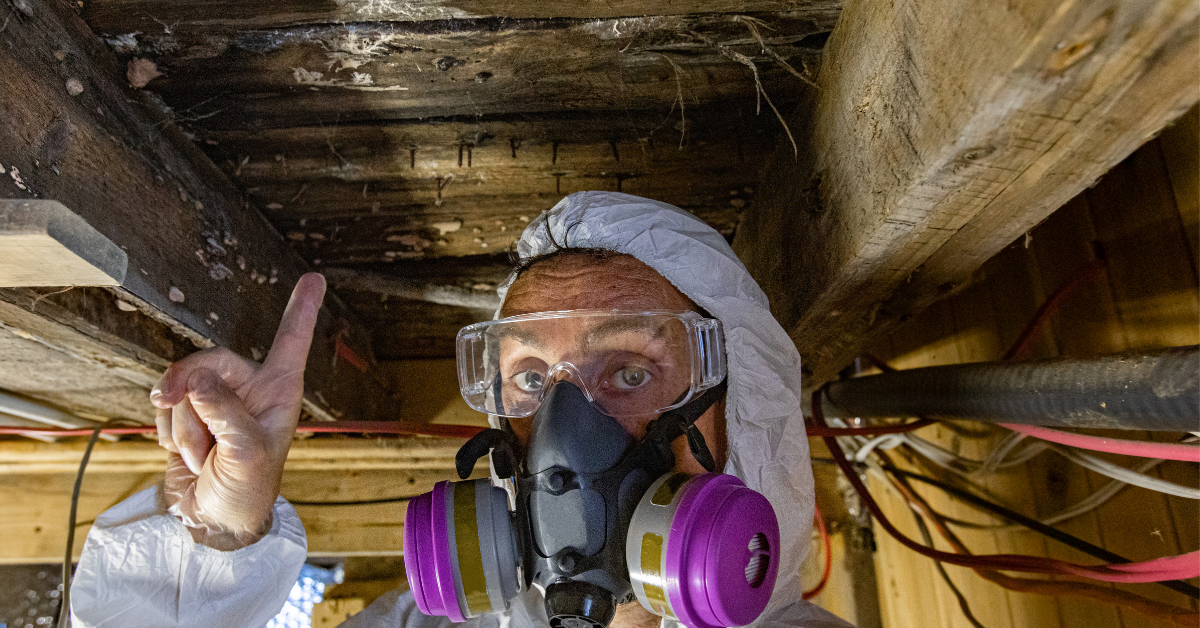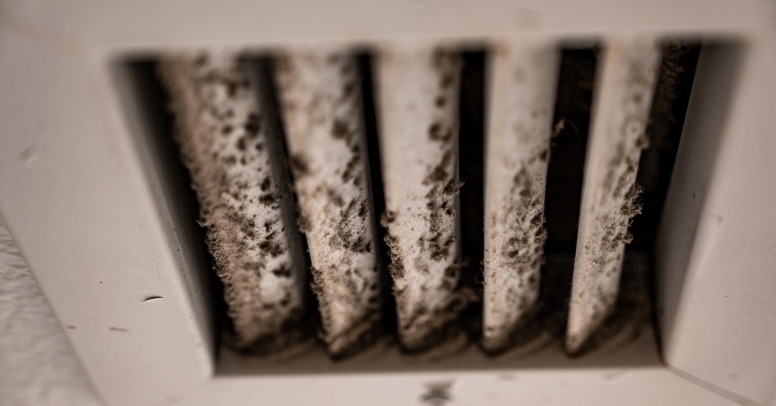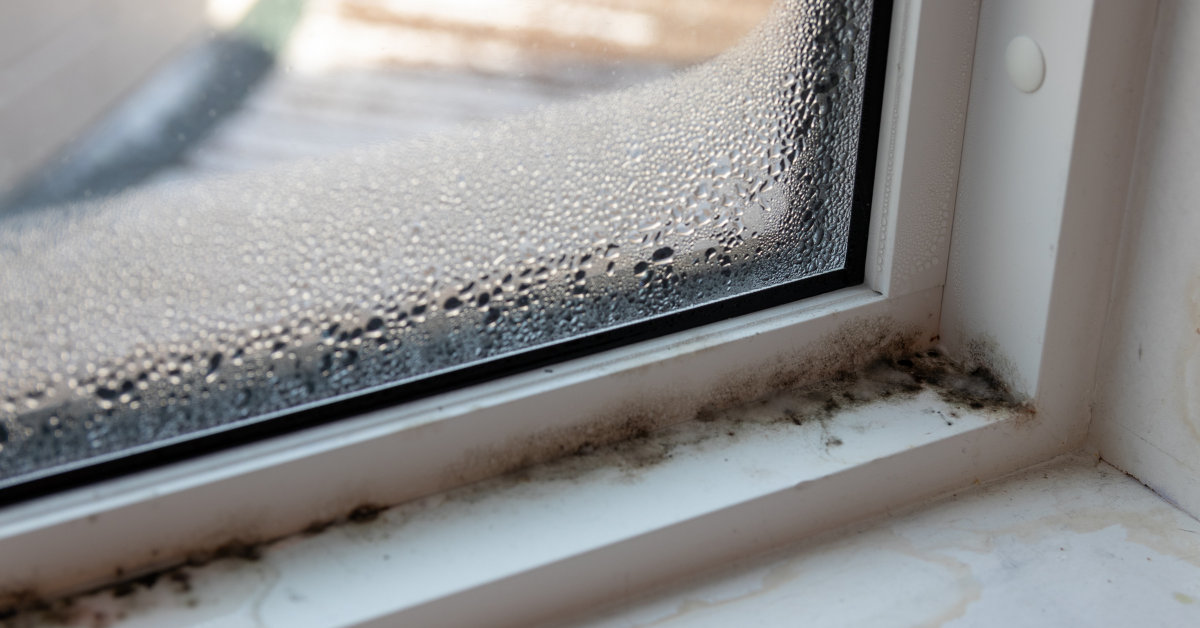Exposure to mold spores is virtually unavoidable as mold grows outdoors but can find its way into buildings and grow there as well. In buildings with poor ventilation, high humidity, and/or water intrusion issues, mold can become problematic, especially for those with pre-existing respiratory conditions or allergies.
Leaky pipes, condensation from HVAC systems that are not properly collected and drained, rain and melted snow that finds its way indoors, and even the rain and snow that building occupants track in can all contribute to the growth of mold.
Long-term exposure to uncontrolled levels of mold could potentially be harmful for virtually everyone and yet to this day, there are no federal regulatory standards or recommendations for “safe” levels of mold in buildings.
So whose obligation is it to ensure that a work environment is being monitored for airborne concentrations of mold spores? When are employees most likely to complain about mold exposure? And what are the most effective, repeatable processes employers and building managers can take to mitigate mold?
To learn more about the symptoms of mold exposure and tips to prevent and control mold outbreaks in the workplace, keep reading!
Where Does Mold Come From
 Most mold indoors originally comes from outdoors! It enters through open doors and windows, on the feet and clothing of building occupants as they come and go, and, in many cases, through poorly or non-filtered HVAC systems.
Most mold indoors originally comes from outdoors! It enters through open doors and windows, on the feet and clothing of building occupants as they come and go, and, in many cases, through poorly or non-filtered HVAC systems.
Mold spores can then get carried around the building via occupant movement and air currents until they find their final “resting point.”
It is not uncommon to find mold growing in enclosed, wet, or humid and occupied spaces. Given the correct conditions of light, temperature, moisture and “food” mold can grow in a lot of different environments.
It can spread and develop on many surfaces. Furthermore, it’s impossible to eliminate 100% of all mold from indoor environments.
The number one cause of mold growth in buildings is moisture and the number one method to stopping mold growth is to eliminate the source of moisture. It is pretty much a waste of time to attempt to rid a building of mold until the source of moisture has been identified and resolved.
In some cases, mold growth can be seen on walls and other building surfaces. This tends to catch occupants’ attention, which results in complaints about mold. However, when occupants are concerned that mold is the cause—or suspected cause—of poor indoor air quality, the majority of the cases where that is the complaint reveal that it is rarely the cause!
 Monitoring for Mold
Monitoring for Mold
If a tenant or employee uncovers visible mold, odds are they’ll at the very least become discomforted by the site. Most likely, they’ll reach out to management and expect an immediate response—the longer it takes to get one, the more upset they’ll be. Even though the reality is that most molds aren’t harmful.
In cases like these, addressing mold problems becomes more of a public relations issue than a health and safety one. You want your tenants or employees to know that they can count on you so the best way to demonstrate that is by being proactive.
In residential buildings and apartments, send out notices to residents during the hot, humid months and give them a helpline to call if they see mold.
It's also important to look for visible signs of mold if the structure has sustained any damages that allow rainwater or snow to enter the building as this could provide an entry point for “water” which in turn could trigger microbial activity.
Every situation where mold is suspected to be the source of indoor air quality problems is unique and the best solution is to investigate the “problem” as soon as it is brought to the attention of building management as the longer it takes to respond, the more emotional the issue becomes.
Symptoms of Mold Exposure
Workplace exposure to mold has been known to cause adverse health effects for workers with allergies, respiratory conditions, or asthma and those who may spend hours in a closed space with not enough ventilation.
Mold levels inside a building should be significantly lower than they are outside the building however the “types” of mold spores should be the same as outdoors. If there are types of spores indoors that do not appear outdoors, it may be a sign of water intrusion and mold growth at some point in the past and that is why it is important to not only test for “how much” mold is present but what the specific mold spore types are that are present.
The presence of mold growth in buildings can lead to health problems for occupants. Their exposure to the mold may lead them to experience allergic reactions or breathing difficulties. The damage may vary from mild discomforts such as sneezing and fever to severe ones like allergy and asthma attacks.
Health effects such as respiratory problems including allergies and exacerbated asthma, exacerbation of existing respiratory diseases such as COPD (chronic obstructive pulmonary disease), and worsening symptoms related to chemical sensitivities. A cough, watery eyes, sneezing, nausea, skin rashes, and even asthma attacks could also be brought about by inhaling these harmful particles.
 Mold Outbreak Prevention Tips
Mold Outbreak Prevention Tips
To prevent a potential outbreak at the workplace for the safety of people, here are some steps that need to be taken:
- Do an inspection for damp areas and clean up all spills and fix any leaks immediately.
- Maintain relative humidity (RH) between 30% and 60% especially during winter months to maintain occupant comfort and also minimize the chances of mold growth.
- Ventilate the working spaces continuously while the building is occupied to let fresh air in.
- Use exhaust fans in bathrooms, kitchens, and other potentially “wet” areas and only install or allow dehumidifiers when there is a vigilant program to maintain, clean, and disinfect them as they can become a source of moisture and mold contamination that is effectively making the problem worse.
- Refrain from using carpets in areas that can become wet or moist like building entrances and if they are used, change them out and/or dry them when they become wet.
This prevention checklist will help you monitor things that need your attention before mold can become a serious issue in your building. Areas that are more likely to be wet or get wet and stay that way such as showers and bathrooms, boiler and mechanical rooms, lower level entries that are poorly drained, and leaky drains of all sorts should be monitored and repaired to avoid moisture getting into the building and promoting mold growth.
If mold is visible or if building occupants are voicing concerns about the indoor air quality of your building as it pertains to mold contamination, hiring a professional mold consultant is the best first step in solving the problem.
Be sure to use only trained and/or Certified Mold Consultants in your state as many states require such certifications. In some cases, mold remediation companies are affiliated with mold Consultants and that is not always the most professional relationship to have. You should almost never hire a mold Consultant that is part of or is affiliated with a mold remediation company!
The importance of dealing with mold complaints in a building cannot be emphasized enough. Not dealing with those complaints quickly can lead to significant Human Resource problems and, if the mold problem is significant enough to lead to building damage, it could lead to costly repairs or even remove the building from service for an extended period of time.
For proper mold testing and evaluation and oversight of remediation, where necessary, contact The Lawson Group to learn more about our comprehensive health and safety services.







